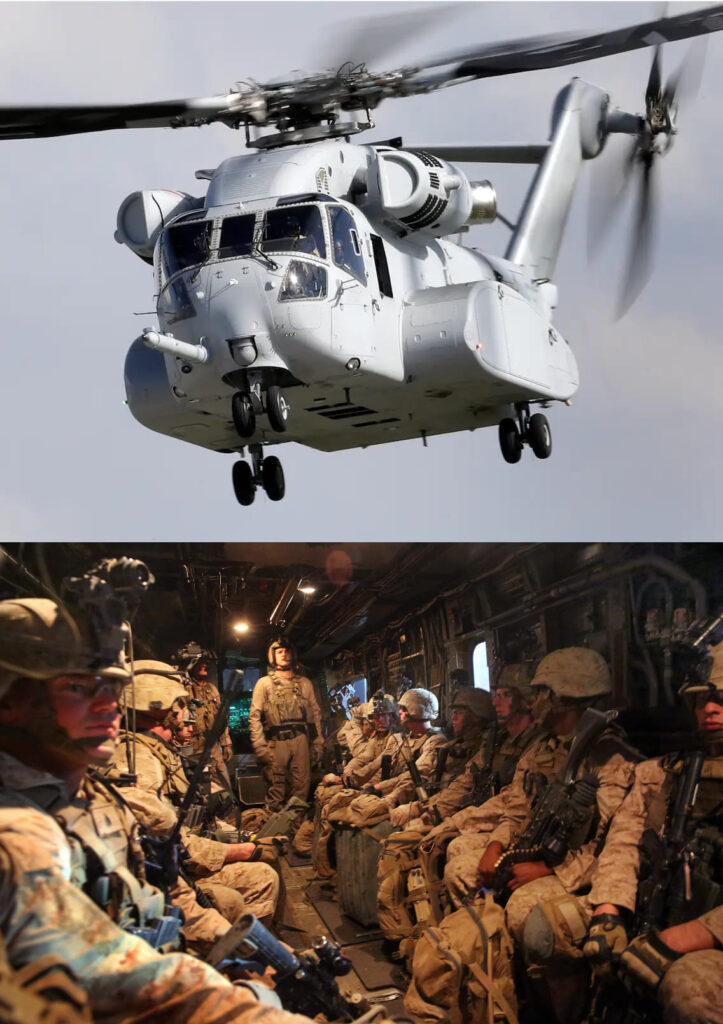The Sikorsky CH-53D Sea Stallion was a heavy-lift transport helicopter operated by the United States Marine Corps (USMC) and the Iranian Air Force (prior to the Iranian Revolution). It was a variant of the Sikorsky CH-53 Sea Stallion family, which also includes the CH-53E Super Stallion and the CH-53K King Stallion.
Here are some key characteristics and features of the CH-53D Sea Stallion:
Heavy-Lift Capability: The CH-53D was designed for heavy-lift operations, capable of carrying large payloads internally or externally using its cargo hook.
Tandem Rotor System: Like other CH-53 variants, the CH-53D featured a tandem rotor system with three main rotor blades on each rotor. This design provided excellent lift capability, stability, and control.
Troop Transport: It could carry up to 37 fully-equipped combat troops or a combination of troops and cargo.
Utility and Support Roles: In addition to troop transport, the CH-53D was used for various utility and support missions, including cargo resupply, casualty evacuation (CASEVAC), and search and rescue (SAR) operations.
Powered by T64 Engines: The CH-53D was powered by two General Electric T64 turboshaft engines, providing the necessary power for its heavy-lift capabilities.
Service History: The CH-53D Sea Stallion served with the USMC from the 1960s until its retirement in the early 2000s. It saw extensive service during the Vietnam War and later conflicts.
While the CH-53D Sea Stallion is no longer in active service with the USMC, it played a significant role in providing heavy-lift capability and troop transport during its operational years. It’s worth noting that newer variants, such as the CH-53E Super Stallion and the CH-53K King Stallion, have since replaced it, offering enhanced capabilities and performance.
